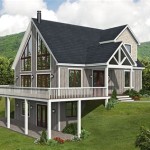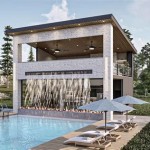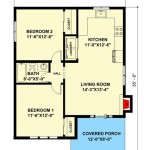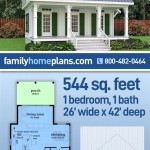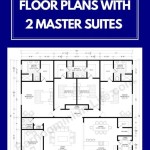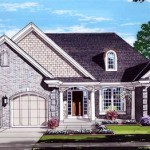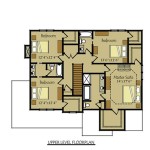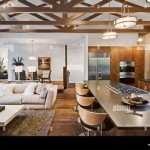Big Family Home Floor Plans: Designing for Space and Harmony
Designing a home for a large family presents unique challenges and opportunities. More than just square footage is required; thoughtful floor plan design is essential to create a space that promotes both togetherness and individual privacy. A well-designed floor plan can significantly improve the quality of life for every family member, fostering a sense of community while providing necessary personal space.
The process of choosing or creating a floor plan for a big family home involves careful consideration of the family's lifestyle, daily routines, and long-term needs. Factors such as the ages of the children, work-from-home arrangements, hobbies, and entertaining habits all play a significant role in determining the ideal layout. It's a complex puzzle of balancing communal areas with private retreats, ensuring adequate storage, and optimizing functionality throughout the entire house.
Families often find themselves weighing options like two-story homes versus sprawling ranch styles, open-concept designs against more traditional layouts, and the placement of key rooms such as the kitchen, bedrooms, and living areas. Each decision impacts the overall flow and functionality of the home, influencing how the family interacts and lives together.
Key Point 1: Defining Needs and Prioritizing Space
Before even looking at floor plans, the first step in designing a big family home is a thorough assessment of the family's needs and priorities. This involves identifying essential spaces, understanding the desired level of privacy, and anticipating future needs. A detailed needs assessment serves as the foundation upon which the entire floor plan is built.
Consider the number of bedrooms required. Are shared bedrooms acceptable or are private rooms a must for each child? How many bathrooms are necessary to avoid morning congestion? Is a home office crucial for remote work? Does the family require a dedicated playroom, a media room, or a hobby space? These questions help to pinpoint the essential spaces that must be accommodated within the floor plan.
Prioritization then comes into play, as the desired features may exceed the budget or available square footage. Families must decide which spaces are non-negotiable and which can be scaled down or eliminated. For example, a large, open-concept kitchen and living area might be a top priority for a family that enjoys cooking and entertaining, while a formal dining room might be deemed less essential. Similarly, the size and location of bedrooms and bathrooms are key considerations. The prioritization process helps to focus the design efforts on the most vital aspects of the home.
Storage is often an overlooked but crucial factor for big families. Ample storage space throughout the house, including closets, pantries, and garage space, can help to minimize clutter and maintain order. Smart storage solutions, such as built-in shelving and under-stair storage, can maximize space utilization and prevent the home from feeling cramped. Consider also seasonal storage needs for items like holiday decorations or sports equipment.
Key Point 2: Balancing Communal and Private Spaces
A successful big family home floor plan strikes a balance between communal areas that encourage interaction and private spaces that offer individual retreat. Creating distinct zones within the home allows family members to spend time together while also providing opportunities for independent activities and relaxation.
Open-concept designs, which combine the kitchen, living room, and dining area into a single large space, are popular for fostering a sense of togetherness. These layouts encourage communication and interaction, allowing family members to easily connect while engaged in different activities. However, it's important to define distinct areas within the open-concept space using furniture, rugs, and changes in flooring or ceiling height to create a sense of separation and prevent the space from feeling cavernous.
In contrast, private spaces such as bedrooms, bathrooms, and home offices provide much-needed solitude and personal space. Locating bedrooms away from high-traffic areas, such as the kitchen and living room, can minimize noise and disturbance. Incorporating en-suite bathrooms for the master bedroom and possibly other bedrooms can enhance privacy and convenience. A dedicated home office allows for focused work or study without interruption.
Consider incorporating flexible spaces that can serve multiple purposes. A bonus room above the garage could function as a playroom, a media room, or a guest bedroom, depending on the family's needs. A finished basement could provide additional living space for teenagers or a recreational area for the entire family. These flexible spaces adapt to the family's evolving needs over time.
Furthermore, the flow between communal and private spaces is crucial. Hallways should be wide enough to accommodate multiple people passing through. Sightlines should be carefully considered to allow parents to supervise children in different areas of the house. The overall layout should promote a sense of connection while also providing opportunities for privacy and retreat.
Key Point 3: Optimizing Functionality and Flow
Beyond the arrangement of rooms, a well-designed floor plan focuses on optimizing functionality and flow throughout the house. This involves considering the placement of key rooms in relation to each other, ensuring efficient traffic patterns, and incorporating features that enhance daily living.
The kitchen, often considered the heart of the home, should be strategically located to facilitate meal preparation and family interaction. A kitchen island provides additional counter space and serves as a gathering spot for homework or casual meals. A walk-in pantry offers ample storage for food and kitchen supplies. The location of the kitchen relative to the dining area and outdoor spaces is also important for ease of serving and entertaining.
Mudrooms or entry areas are invaluable for big families, providing a dedicated space to store shoes, coats, backpacks, and other outdoor gear. A well-organized mudroom can prevent clutter from accumulating in other areas of the house and keep the home tidy. Including built-in storage, benches, and hooks can maximize functionality and encourage family members to keep the space organized.
Laundry rooms should be conveniently located near bedrooms or living areas to minimize the burden of transporting laundry throughout the house. A dedicated laundry room with ample counter space, storage, and a folding area can make laundry chores more efficient. Consider including a sink for pre-treating stains and a drying rack for delicate items.
The location of bathrooms is another crucial consideration. A powder room near the main living area is convenient for guests, while en-suite bathrooms provide privacy for bedrooms. Consider adding a Jack-and-Jill bathroom between two children's bedrooms to save space and provide shared access. The number and placement of bathrooms should align with the family's size and daily routines.
Finally, consider the traffic patterns throughout the house. Avoid creating bottlenecks or dead-end hallways. Ensure that there are multiple routes between key areas, such as the kitchen, living room, and bedrooms. The overall flow of the house should feel natural and intuitive, making it easy for family members to move around and interact with each other.
Thoughtful planning and design are critical when crafting a floor plan for a large family home. By prioritizing needs, balancing communal and private spaces, and optimizing functionality and flow, families can create a home that supports their lifestyle and enhances their well-being. This careful approach will result in a space that not only accommodates the family's size but also fosters a sense of community, comfort, and harmony for years to come.

Spacious And Open Best Floor Plans For Families Blog Homeplans Com

Floor Plan Friday Big Family Home House Plans Dream New

Floor Plan Friday Huge Family Home With Library Or 5th Bedroom

Spacious And Open Best Floor Plans For Families Blog Homeplans Com

Large Family Style Home Design House Plan

Large House Plans 4 Bedroom Home

Large Southern Brick House Plan By Max Fulbright Designs

Unique Two Story House Plan Floor Plans For Large 2 Homes Desi Family Blueprints Victorian

Spacious And Open Best Floor Plans For Families Blog Homeplans Com

8 Fabulous Family Home Plans Blog Dreamhomesource Com

